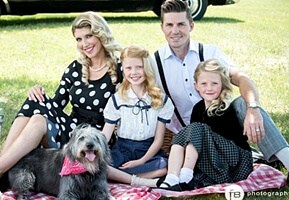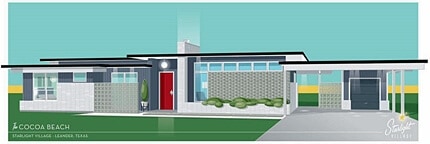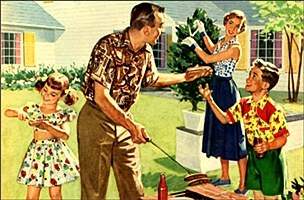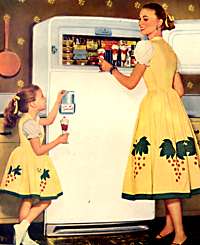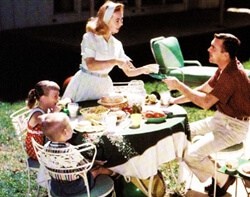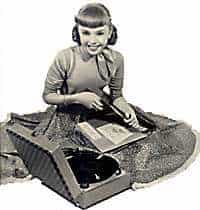1950s Family life was very much a family affair. For starters, most probably it was a two a parent household. Both a Mom and a Dad.
Divorce was not a common thing. Why? Societal pressure for one thing. You were supposed to get married and stay married, regardless of how miserable you were. Divorce carried a stigma.
Back then, people spend more of their lives married than they do today due to lower divorce rates and earlier ages at marriage. People just didn’t live alone. Only 9.3% of homes had only a single occupant in 1950, up slightly to 16.3% in 1960. Today that number is over 25%.
Women’s prospects as single people were pretty grim. Even today, divorced women suffer about a 45% decline in economic status and it was worse then. Today a woman can get a decent paying job but back in the Fifties, a woman’s best chance at employment was in traditionally accepted “women’s jobs” such as secretary, teacher, nurse, librarian and so forth. So there was an economic incentive to stay married.
Men felt the societal pressure. A proper fella had a wife and kids. His boss expected it. His neighbors and family expected it.
In 1950 there were 385,000 divorces which only rose slightly to 395,000 by 1959. Contrast that with 1,135,000 in 1998, and you begin to see the trend. To put those numbers in perspective, only 2.6 people out of 1,000 were divorced in 1950, whereas it climbed to 4.2 out of 1,000 in 1998.
Mom was probably younger than today. Did you know that the number of teen births has declined since the high in 1957?
According to the NCHS/CDC report “Births to Teenagers in the United States, 1940-2000” the birth rate for U.S. teenagers in 2000 was 48.7 births per 1,000 women aged 15–19 years, the lowest level ever reported for the Nation. In 1957 the rate 96.3 per 1,000, about double its current level.
People married younger in the 50s. 1950 median age for a first marriage was 22.8 years old for men and 20.3 for women. In 2000 the median age at first marriage: Males: 26.8 Females: 25.1.
Along with the Fifties Baby Boom, came a housing boom. Home ownership went from 55% in 1950 to 61.9% in 1960. From there it stabilizes and ran around 66.3% in 1998.
But here’s a surprise. The 1950 house may well have been heated by coal! It was the most common heating fuel in 1950. Only .7% of homes were heated by electric and 26.6% by utility gas. That would all change over the course of the decade though. By 1960 coal was down to 12.2% and utility gas up to 53.1%. Today 51% of homes are heated by utility gas.
Want to talk bathrooms? Complete plumbing (hot and cold piped water, a bath-tub or shower, and a flush toilet) was only available in 64.5% of homes in 1950. That would change too and by 1960 only 16.6% of homes were without complete plumbing. Today it’s around 1%.
Having said all of that, most people grew up in houses with flush toilets and never saw a piece of coal in their lives. You never saw Richie Cunningham go to an outhouse, did you?
Speaking of the Cunningham’s, and let’s add Ozzie and Harriett Nelson, the Anderson’s of “Father Knows Best” and all those other TV families, they weren’t real. It was TV. Nobody is perfect, especially not parents, and problems cannot be solved in 30 minutes. Those TV families do serve as example in some ways though.
Families did sit down to eat together. Yes, the whole family. Mom cooked because that was her job. In 1950 there were 40,174,705 employed males and 15,559,454 employed females. Employed being the key word as Mom worked her tail off in the home for which she wasn’t materially compensated. Want to argue that point? Did she get social security credit for it? No. Does she today? No. But I digress.
After dinner the family would watch TV if they had one, which by the end of the decade was likely. The whole family watched the same show. Why? Because there was only one TV. In the whole house. Could the kids run to their bedrooms and talk on the phone? I don’t think so. Why? Because they may have been only one phone. In the whole house.
But a kid might have had a small record player of your own. Probably had a transistor radio. And that little transistor radio is where we learned about Rock and Roll.
What you may well ask, did kids do for fun? We visited with one another. In those days you could walk home at night without ending up on a milk carton. If you were a little older, after school you went to a soda shop or diner. Like Arnold’s in Happy Days. And hung out. But no malls, no computers, no stereos, no video games and gasp, no cell phones or texting.